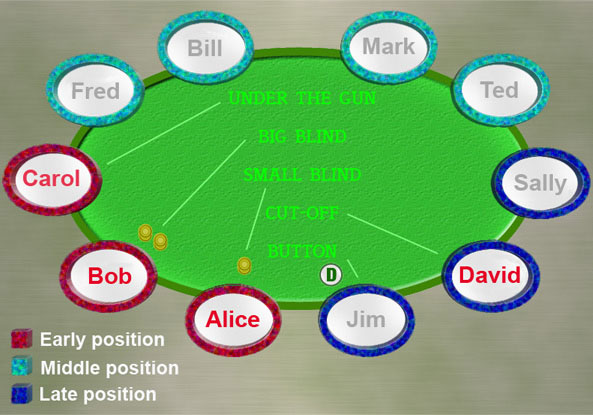Poker Fundamentals
- Introduction to Poker
- Understanding Texas Hold'em
- Fundamentals of Poker Strategy
Understanding Texas Hold'em
Basic Rules of Texas Hold'em

Procedures of betting in poker.
Texas Hold'em is one of the most popular forms of poker, played in casinos and home games around the world. The game combines elements of chance with strategic decision-making, making it a fascinating and challenging pastime. This article will guide you through the basic rules of Texas Hold'em.
The Role of the Dealer and the Dealer Button
In Texas Hold'em, the role of the dealer is crucial. The dealer is responsible for shuffling the deck, dealing the cards, and managing the betting rounds. In a casino setting, a professional dealer handles the cards, but the dealer button still rotates around the table to determine the order of betting. In a home game, the role of the dealer often rotates among the players.
The dealer button is a marker that indicates the theoretical dealer of the hand. After each hand, the dealer button moves one spot to the left, ensuring everyone at the table takes turns being the dealer.
Understanding Blinds: Small Blind and Big Blind
Before the cards are dealt, the two players to the left of the dealer post the small blind and big blind, respectively. These are forced bets that start the pot. The size of the blinds dictates the stakes of the game.
The small blind is usually half the minimum bet, and the big blind is the full minimum bet. For example, in a 2/4 game, the small blind is 2 and the big blind is 4.
The Structure of Betting Rounds
A hand of Texas Hold'em consists of up to four betting rounds: pre-flop, flop, turn, and river.
- Pre-flop: After the blinds are posted, each player is dealt two private cards (known as 'hole cards'). The first round of betting begins with the player to the left of the big blind.
- Flop: The dealer places three community cards face-up on the 'board'. A second round of betting begins with the player to the left of the dealer button.
- Turn: The dealer adds a fourth community card to the board. Another round of betting ensues.
- River: The dealer adds a fifth and final community card to the board. The final round of betting takes place.
In each betting round, players can choose to check, bet, or fold. Once the final betting round is complete, the remaining players proceed to the showdown.
The Showdown: Determining the Winner
If two or more players remain after the final betting round, a showdown occurs. Players reveal their hole cards, and the player with the best five-card poker hand, made from their two hole cards and the five community cards, wins the pot.
If there's a tie, the pot is split evenly among the winning players. If at any point during a hand all players but one have folded, the remaining player wins the pot without having to show their cards.
Understanding these basic rules is the first step to mastering Texas Hold'em. As you gain experience, you'll start to learn the nuances and strategies that make this game so compelling.